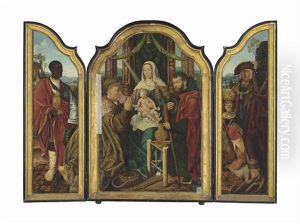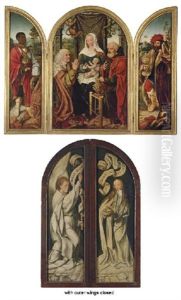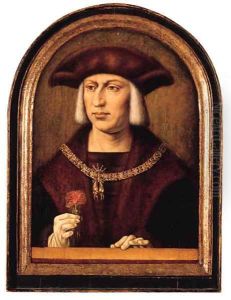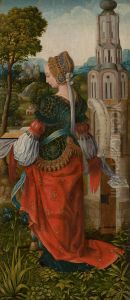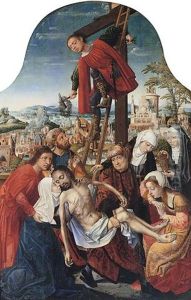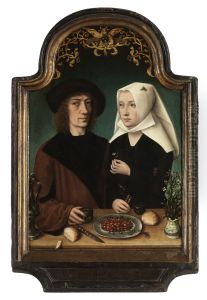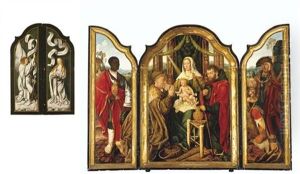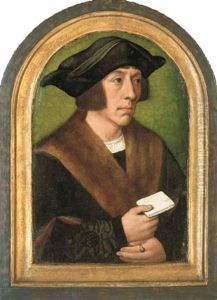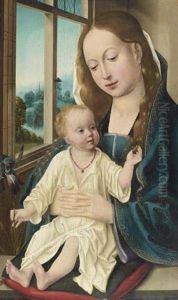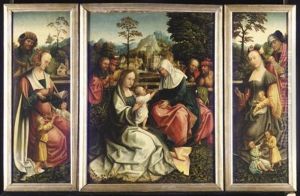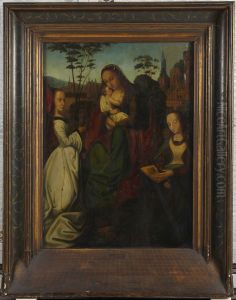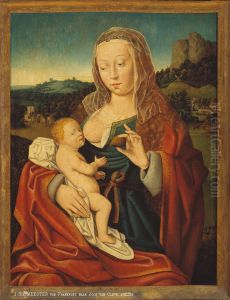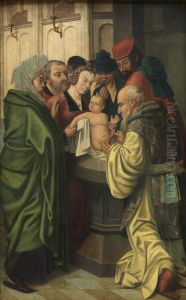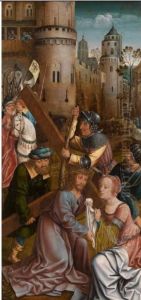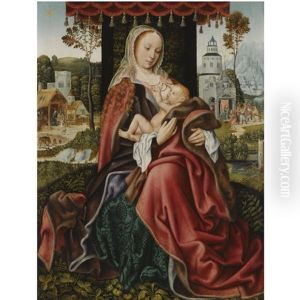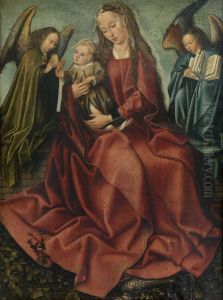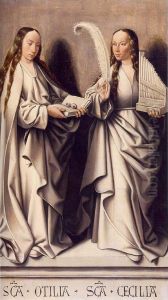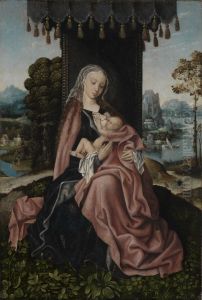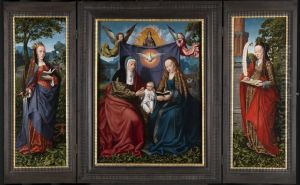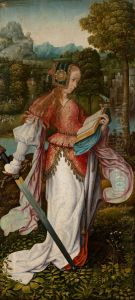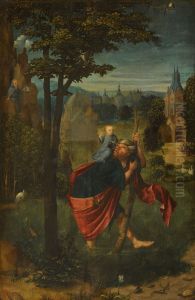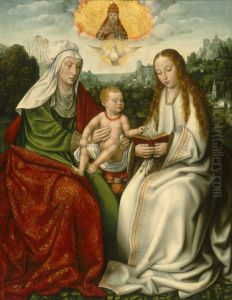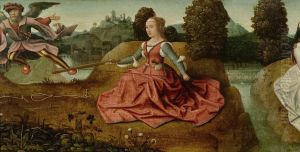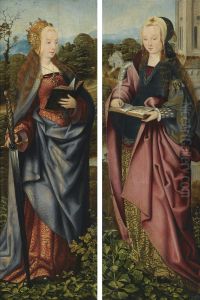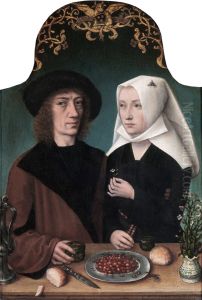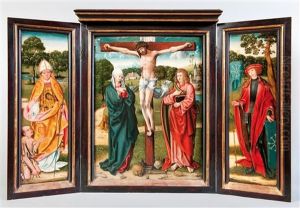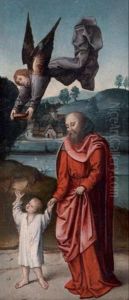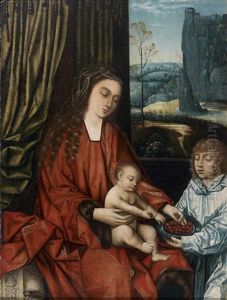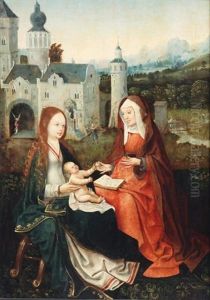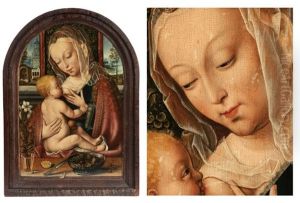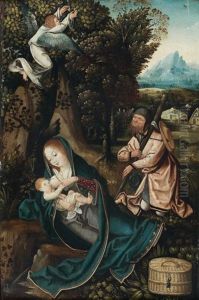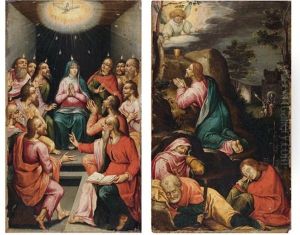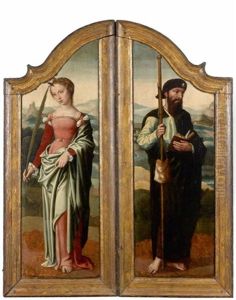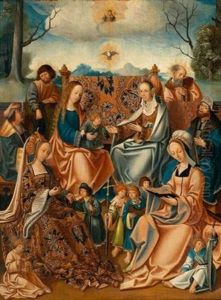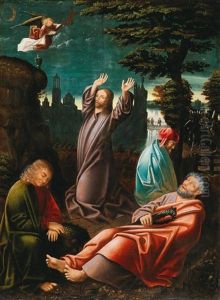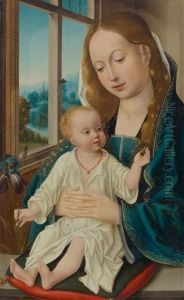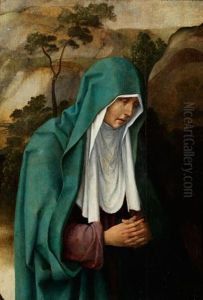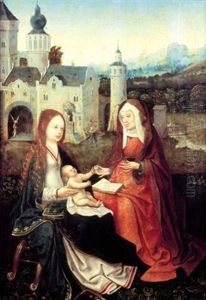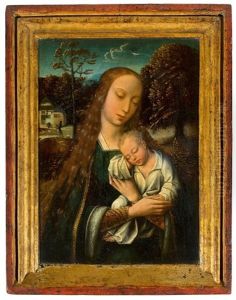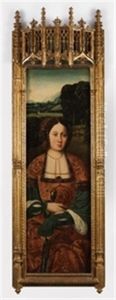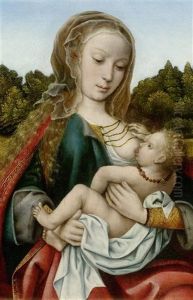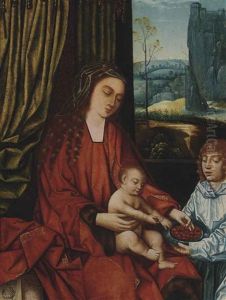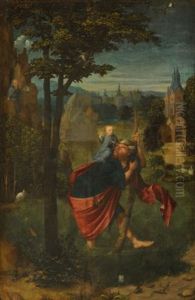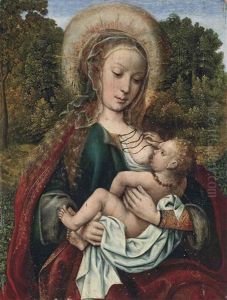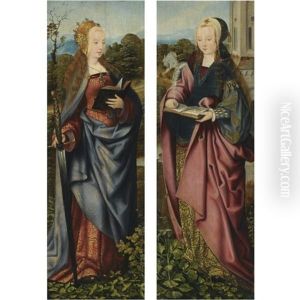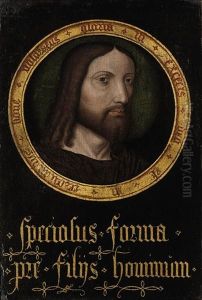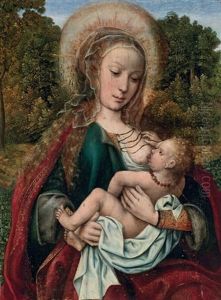Master Of Frankfurt Paintings
The Master of Frankfurt is the notname given to an anonymous Flemish painter active in Antwerp during the late 15th and early 16th centuries. While the true identity of the Master of Frankfurt remains unknown, art historians have named him after a triptych altarpiece depicting the Crucifixion, now housed in the Historisches Museum in Frankfurt. This artist's work is characterized by its detailed narrative scenes, vibrant use of color, and incorporation of contemporary Flemish life, which provides a vivid window into the society and culture of the time. The Master of Frankfurt is believed to have been born around 1460 and died around 1533. Despite the mystery surrounding his identity, it is speculated that he was a close follower or student of Hans Memling, a leading Flemish painter of the time, due to stylistic similarities in their works. The Master of Frankfurt's oeuvre includes religious compositions, portraits, and altarpieces, distinguished by their intricate detail, emotional expression, and the use of landscape to enhance storytelling. His works were highly esteemed for their innovative compositions and for the way they reflected the intricate social fabric and religious fervor of the late medieval period in Flanders. One of the most notable aspects of his art is the inclusion of self-portraits within larger compositions, a practice that was relatively uncommon at the time. This has led to some speculation about his personality and the extent of his travels, as these self-portraits often show him in the company of high-ranking officials and amidst scenes of significant historical events. Despite the lack of concrete biographical details, the Master of Frankfurt's contributions to Northern Renaissance art are undeniable. His paintings are celebrated for their vivid portrayal of human emotion and the detailed depiction of both secular and religious life. His ability to blend narrative with meticulous attention to detail has left a lasting legacy, influencing subsequent generations of artists in the Low Countries. Today, his works are preserved in various museums around the world, where they continue to fascinate scholars and art lovers alike for their beauty and historical value.
